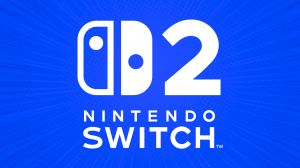The team over at Blizzard had a lot to say about World of Warcraft Classic in their most recent developer blog update, including how tedious the process of development has actually been and how they are going about making it a reality.
Videos by ComicBook.com
The process of restoring the classic game has not been “straightforward,” according to the post. There are a lot of intricities that go into this project to make sure it’s done right but doing it right is the goal of ever dev currently working on this venture. Finally Blizzard feels like they’ve made enough project where they can comfortably talk about the road to completion so far, including a few updates on what’s next down the pipeline:

“The first—and among the most important—decision we had to make was which version of the game to focus on. As many of you have noted, the classic period was two years long and full of changes. Core features like Battlegrounds were introduced in patches after WoW’s original launch, and class design similarly changed over time. After careful consideration, we decided on Patch 1.12: Drums of War as our foundation, because it represents the most complete version of the classic experience.”
They also talked about working with the source code and what they wanted to use that was readily available. That, and dying. A lot. For testing purposes, “obviously.”
“Our initial runs exposed a few (expected) issues: the game sometimes crashed, didn’t recognize our modern video cards, and was incompatible with our current login system. That first pass also couldn’t support any of our modern security and anti-cheating capabilities. Clearly we had a lot of work to do to make WoW Classic live up to the Blizzard standard of quality, and deliver the experience players want.”
The main goal for this is authenticity and making sure that they keep true to the vanilla feel that nobody else besides me seem to remember how freaking tedious it was. Blizzard mentioned, “While our initial effort helped us determine the experience we wanted to provide, this second prototype really defined how we’d get there. Starting from a modern architecture—with all its security and stability changes—means the team’s efforts can be focused on pursuing an authentic classic experience. Any differences in behavior between our development builds and the patch 1.12 reference can be systematically cataloged and corrected, while still operating from a foundation that’s stable and secure.”
So what does it take to recreate an authentic classic experience with modern engineering? Let’s start by categorizing the different types of game data that make up WoW:
- Table data: This kind of information is almost always represented as numbers. How many hit points a creature has, the amount of Strength an item grants, or where and when certain creatures spawn, are all examples of the numerical data we store in our databases. We can also store and enforce relationships between different pieces of data.
- File data: This is often very dense data like 3D models, textures, animations and terrain. Our user interface is built up from XML and Lua files. Many of the art files do not use the same file formats that commercial art tools spit out. Our build pipeline takes these raw art files and translates them into something optimized for our game to read and process.
- Lua scripts: Some features are driven by Lua scripts written by designers, allowing them to easily define custom behaviors for server-side logic without requiring deep engineering knowledge.
They also shared side by side comparisons of stats, how the engineering evolved, and much, much more. To get all of the scoopy scoop from Blizzard themselves, check out their ‘Watercooler’ update right here.









